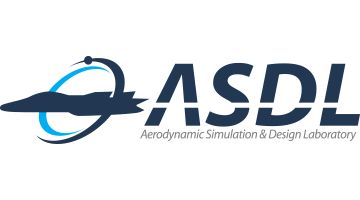Higher-order Accurate Numerical Methods
Compared to conventional FVM based 2nd order numerical methods, high order methods based on DG(Discontinuous Galerkin)/FEM(Finite Element Method) have the advantage of simulating complex unsteady flow such as turbulent flow, acoustic wave, elastic wave, and so on. However, as high order method is not matured enough to be used on industrial applications, several issues such as the development of accurate shock capturing method and efficient method for calculating residual terms on curved-mixed mesh need to be solved. Focusing on the aforementioned problems, our laboratory developed hMLP/hMLP_BD method from FVM based MLP method. In addition, DRM(Direct Reconstruction Method) is currently begin developed to improve computational efficiency on the curved-mixed grid.
Generalizing the MLP method, hMLP is not only applicable to arbitrary high order method including DG and FR(Flux Reconstruction)/CPR(Correction Procedure via Reconstruction) but also accurate and efficient for capturing physical discontinuity by controlling numerical oscillation. hMLP_BD method efficiently eliminates subcell Gibbs oscillation near physical discontinuities, to say nothing of preserving high accuracy in the smooth flow field.
Figure 1 is pseudo Schlieren visualization of interaction between the 2D wedge and moving shock, which is simulated by using FVM-MLP(left) and DG-hMLP(right). This problem simulates reflected shock waves and complex vortex structures made by the interaction between a moving shock and 2D wedge. It demonstrates that the DG-hMLP method captures complex shock structures and flow field accurately.


Fig. 1. Schlieren visualization of 2D wedge-moving shock interaction

Fig. 2. Density contour of high order result using DG-P3 (left: hMLP, right: hMLP_BD)

Fig. 2. Density contour of high order result using DG-P3 (left: hMLP, right: hMLP_BD)
Complex flow structure developed from strong shock-vortex interaction is simulated by using DG-hMLP(left)/DG-hMLP_BD(right) and visualized on figure 2. Separation of the vortex is accurately captured by both hMLP and hMLP_BD. In addition, it is demonstrated that hMLP_BD method efficiently suppresses subcell Gibbs oscillation compared to the original hMLP method.
By developing accurate and robust numerical schemes, our laboratory simulates and analyzes various aerospace applications such as high-speed air vehicles, rocket engines, and so on.






